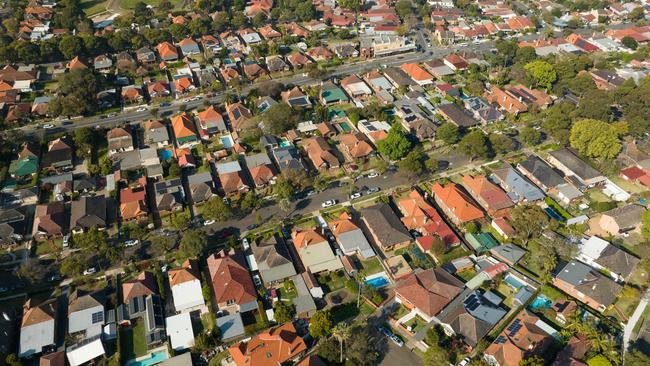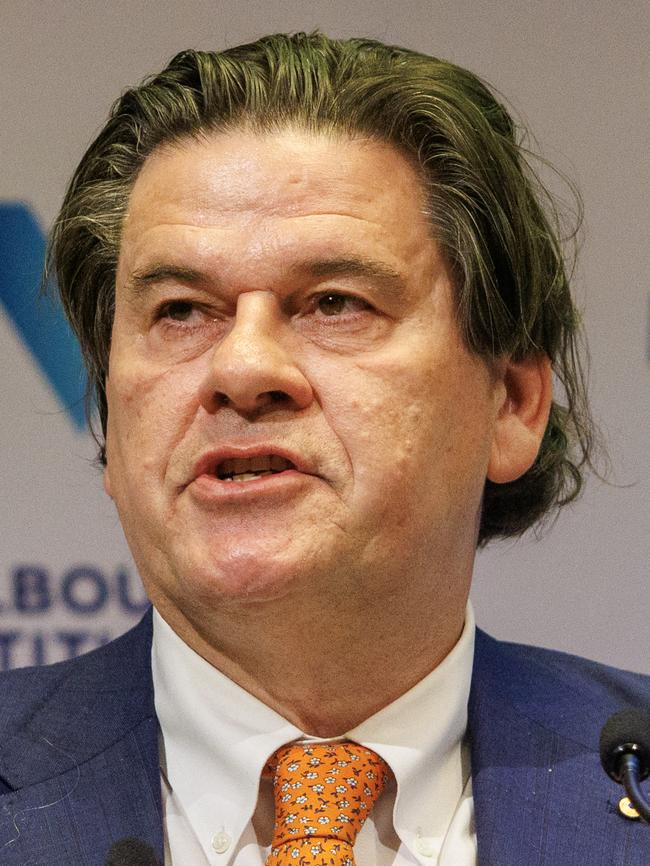Home builders’ productivity in free fall, putting at risk one of Albanese’s top election promises
The housing construction industry has suffered 39 per cent decline in productivity over the past two decades, making Labor’s pledge to build 1.2 million new homes even more unachievable.

Australia’s housing construction industry is one of the least productive sectors in the economy and has suffered a 39 per cent decline over the past two decades, making Labor’s pledge to build 1.2 million new homes even more unachievable without urgent reform.
Official productivity data has revealed that while dwelling construction productivity has collapsed over the past decade, the downturn has accelerated over the past five years, with estimates that the supply of new homes is 40 per cent below what is needed to meet demand.
The Australian Industry Group has warned that the significance of this productivity collapse is stark when compared against economy-wide productivity, showing new home construction is among the least productive sectors.
A research report based on the new Productivity Commission data shows labour productivity in Australia has increased by 24 per cent over the past decade, in line with a “normal development” in rising technology levels.
However, dwelling construction has gone backwards by 14 per cent over the same period, and 25 per cent for standalone houses.
There was no other industry that had shown such a pattern of long-term decline.
While general housing construction was down by 14 per cent in terms of the value of houses built, it was down 33 per cent when based on the number of houses built over the past two decades.

The construction of houses, as opposed to high-density dwellings and apartments, was the worst, with productivity falling by 25 per cent in value terms and 39 per cent on the volume of houses constructed, an Ai Group report into the productivity data shows.
“It has been a regular refrain from political leaders and policy specialists that Australia’s housing crisis is fundamentally a problem of supply,” Ai Group CEO Innes Willox said.
“Indeed, previous Ai Group research has shown the Australia needs to very quickly increase the rate of housing completions by 40 per cent if we are to meet our national target of 1.2 million new well-located homes by the end of the 2020s.
“This will require a completion rate – of 60,000 new homes per quarter – which Australia has never sustainably achieved before. And we have little chance of reaching these levels with a home building industry ravaged by declining productivity.
“Trying to extract more houses from an industry with declining productivity is like filling a bucket with a widening hole. Without action to turn around this decade-long decline, Australia has little chance of meeting its targets, or ensuring affordable and secure housing for our changing population.”
Workforce shortages, regulatory hurdles – including all levels of government – and a lack of innovation were among the key issues driving the productivity decline.
These factors are “affecting Australia’s construction industry are not only straining builders but also impacting housing affordability and the sector’s long-term growth”,’ the Ai report states.
“The slow pace of change highlights the need for greater investment in technology, streamlined regulations, and workforce development.
“Addressing these issues will be crucial for enhancing productivity, fostering innovation, and ensuring the sustainability of the construction sector in the years to come.”
Higher-density building including apartments had outperformed standalone houses with a 5 per cent rise in value terms, but still fell 24 per cent on volume.
“House building productivity has been steadily declining for 20 years. By contrast, apartment productivity rose until 2017-18, when it began to suffer a precipitous decline,” Mr Willox said.
“This productivity decline is directly connected to challenges facing the industry – and indeed for our housing market writ large.
“It results in higher costs for construction – as more labour is required to produce the same amount of housing – eating into business margins.
“It drives prices higher as builders have to recover these labour costs. It also exacerbates skills shortages, as the constrained construction workforce is being used less efficiently.”

Economists have criticised both sides of politics for their competing election platforms by placing too much emphasis on demand rather than the supply-side crisis facing housing
Labor has now pledged $43bn on housing to address both first- home buyer accessibility and supply side issues.
A spokesman for Minister Clare O’Neil said it would take time to turn the tide on a housing crisis a generation in the making.
“That’s why it’s so important the Labor government keeps building on the strong foundations we laid last term,” he said.
“Planning reform, supercharging construction worker training, direct investment in building more social and affordable homes – these are all policies that have taken a Labor government to deliver, and we’ll continue our dedicated work on housing in a second term.”
However, in its first term of office, the Coalition accused it of having barely built a single new home under its 1.2 million new home pledge.
Key elements of Labor’s 2025 election promise to try and reach its 1.2 million target was investing $10bn to build up to 100,000 homes for first-home buyers only.
It also pledged to expand access to the 5 per cent deposit scheme to all first-home buyers.
The Coalition has cited the CFMEU dominance of the sector as playing a chief role in the construction industry’s productivity crisis.
The Ai report cited the Australian Bureau of Statistics’ recent business innovation survey which revealed 64 per cent of construction businesses identified barriers to innovation as a “lack of skilled workers” as their primary barrier.
“Innovation in Australia’s construction industry has historically lagged behind other sectors which have embraced automation, digitalisation, and process efficiencies at a much faster pace,” Mr Willox said.
“In addition to cost and margin pressures, the construction industry is also struggling to secure enough labour, which is putting even more strain on builders.
“The sector relies heavily on skilled trades, and these trades are currently in severe shortage.”






To join the conversation, please log in. Don't have an account? Register
Join the conversation, you are commenting as Logout